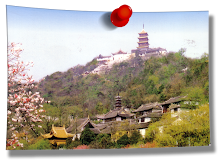

Kuopio is a Finnish city and municipality located in the province of Eastern Finland and the region of Northern Savonia. A population of 92.046 makes it the ninth biggest city in the country. The city has a total area of 1.728,54 square kilometres (667,39 sq mi), of which 604,51 km2 (233,40 sq mi) is water and half forest. The population density is only 82/km² (210/sq mi), but the city's urban areas are populated very densely (urban area: 1 617,6 /km²), nationally second only to capital Helsinki (urban area: 1.690/km²). The population of the entire Kuopio region is 119.472.
Kuopio was founded in 1653 by Governor Peter Brahe, but the official date is recognized as November 17, 1775, when King Gustav III of Sweden ordered the establishment of the city of Kuopio. The municipality of Vehmersalmi joined the city of Kuopio on January 1, 2005 like the municipality of Kuopion maalaiskunta in 1969 and the municipality of Riistavesi in 1973. Karttula will join Kuopio in 2011. Kuopio is almost completely surrounded by lake Kallavesi.
The city is surrounded by lake Kallavesi, and several parts of it are built on islands. Kuopio's ample waterfronts and islands are also utilized in the Saaristokaupunki (lit. Archipelago city) -project, the biggest residential area currently being built in Finland. Saaristokaupunki will accommodate a total of 14.000 inhabitants in 2015. All houses will be situated no more than 500 meters from the nearest lakeshore. Kuopio is known for its association with a national delicacy, Finnish fish pastry (Kalakukko), and the dialect of Savo, as well as the hill of Puijo and the Puijo tower. Besides being a very popular outdoor recreation area, Puijo serves also as a stage for a yearly World Cup ski jumping competition.
The city has a nationally unique feature in its street network, where every second street is practically a pedestrian and cycle street, so called "rännikatu" (lit. rain gutter street). These operate as woonerf streets, providing pedestrians a calm environment aside from the main street traffic. This setup dates back all the way to 1776 and the first town plan by Pehr Kjellman.
Kuopio was founded in 1653 by Governor Peter Brahe, but the official date is recognized as November 17, 1775, when King Gustav III of Sweden ordered the establishment of the city of Kuopio. The municipality of Vehmersalmi joined the city of Kuopio on January 1, 2005 like the municipality of Kuopion maalaiskunta in 1969 and the municipality of Riistavesi in 1973. Karttula will join Kuopio in 2011. Kuopio is almost completely surrounded by lake Kallavesi.
The city is surrounded by lake Kallavesi, and several parts of it are built on islands. Kuopio's ample waterfronts and islands are also utilized in the Saaristokaupunki (lit. Archipelago city) -project, the biggest residential area currently being built in Finland. Saaristokaupunki will accommodate a total of 14.000 inhabitants in 2015. All houses will be situated no more than 500 meters from the nearest lakeshore. Kuopio is known for its association with a national delicacy, Finnish fish pastry (Kalakukko), and the dialect of Savo, as well as the hill of Puijo and the Puijo tower. Besides being a very popular outdoor recreation area, Puijo serves also as a stage for a yearly World Cup ski jumping competition.
The city has a nationally unique feature in its street network, where every second street is practically a pedestrian and cycle street, so called "rännikatu" (lit. rain gutter street). These operate as woonerf streets, providing pedestrians a calm environment aside from the main street traffic. This setup dates back all the way to 1776 and the first town plan by Pehr Kjellman.































No comments:
Post a Comment